Objective : The students should be able to
i. state the steps to launch PowerPoint presentation
ii. state the function of menu bar and toolbars
iii. create a blank slide presentation
iv. use WordArt
v. insert picture
vi. insert custom animation
vii. save the presentation
viii. close and exit the presentation
Knowledge and Skills :
i. Launch Power Point 2003 software.
ii. Insert WordArt, picture and custom animation.
iii. Save a file.
iv. Close and exit presentation.
Launch the Power Point Presentation
1. Click Start, All Programs and Microsoft Office.
2. Choose Microsoft Office PowerPoint 2003.
3. A screen as below will be displayed.
4. The display is the interface of Power Point Presentation.
5. There are Menu bar and Toolbars on the top of the window
Insert WordArt
1. On the drawing toolbar, click WordArt
2. Select any ‘WordArt’ style.
3. The WordArt Gallery dialog box appears.
4. When Edit WordArt Text dialog box appears, type the word Myself and click OK as shown below.
Insert Picture
1.Click Insert on the Menu bar, then select Picture from Clipart or Files where your pictures are saved
2.Move the picture anywhere you like on the slide. You may see an example below.
Insert Custom Animation
1.Click Slide Show on the Menu bar and select Custom Animation.
2.The Custom Animation Task Pane appears on the right of the window.
3.Click on the word Myself then click Add Effect on the task pane.
4.Select Entrance from the drop down menu and select any effects such as Checkerboard, Fly In and others.
5.You may modify the effects; start, the speed and direction by clicking the drop down buttons.
6.Click on the picture and then click Add Effect on the task pane.
7.Select Emphasis from the drop down menu and select any effects such as Grow/Shrink, Spin or more effects.
8.You may modify the effects; start, the speed and amount by clicking the drop down buttons.
9.Save your presentation as Myself in My Document.
10.Close and exit your presentation.
Sunday, July 5, 2009
Posted by Nur Assikin bt. Jamaludin at 1:26 AM 0 comments
Thursday, July 2, 2009
Penyelesaian Masalah Salah Laku dalam kalangan pelajar
Peranan remaja
* Mencari kawan sebaya (peers) yang betul. Umumnya, remaja banyak menghabiskan masa di sekolah bersama rakan-rakan. Pemilihan rakan sebaya yang betul dapat mengelakkan daripada terpengaruh dengan unsur-unsur yang salah. Rakan yang baik adalah rakan yang mengingatkan kita semasa kita tersalah arah dan laku. Selalunya rakan-rakan terdiri daripada orang yang sebaya dan bersependapat dalam banyak hal. Maka remaja harus berhati-hati dalam memilih rakan.
* Mendapatkan bantuan jika ada masalah. Remaja perlu mendapatkan nasihat daripada orang lain selain rakan sebaya jika menghadapi masalah di rumah atau dengan rakan-rakan. Kebanyakan remaja lebih suka mendiamkan diri dengan masalah mereka ataupun hanya menceritakan kepada rakan sebaya. Akibatnya, kadangkala langkah yang diambil menjadi masalah kepada orang lain kerana tidak selari dengan tuntutan agama dan undang-undang. Berbincang dengan kaunselor atau guru dapat membantu sekiranya ibu bapa dan penjaga tidak memahami masalah remaja.
* Berusaha menjadi contoh yang baik. Sikap ini harus ada pada setiap remaja kerana ia dapat membantu remaja untuk mengawal diri. Sekurang-kurangnya jika tidak boleh menjadi contoh yang baik kepada orang lain, jadilah contoh dalam ahli keluarga sendiri dan juga pada diri sendiri. rasa bersalah sekiranya melakukan kesalahan harus dibayar dengan azam untuk tidak mengulanginya lagi dan tidak berharap orang yang terdekat melakukannya.
Peranan sekolah
* Subjek yang diajar harus ada nilai tambah, iaitu menerapkan nilai-nilai murni dalam setiap kelas. Kelas boleh dijalankan dengan interaktif supaya pelajar lebih berminat untuk datang ke sekolah dan meneruskan kelas. Elemen subjek agama dan sivik seharusnya ada dalam setiap subjek supaya remaja akan terdidik dengan nilai-nilai murni dalam setiap apa yang dipelajarinya.
* Sentiasa berbincang dengan ibu bapa. Guru kelas boleh mengambil langkah yang proaktif dengan menyelidik latar belakang pelajar-pelajar kelasnya dan menghubungi ibu bapa untuk berbincang jika timbul apa-apa masalah yang boleh membawa kepada perlakuan disiplin. Melabel murid jahat bukanlah penyelesaiannya, tetapi guru seharusnya berusaha untuk memahami punca pelajar bertindak sedemikian. Guru kaunseling juga harus ditambah kerana pelajar boleh merujuk kepada mereka di atas apa-apa masalah yang mereka hadapi.
Peranan Keluarga
* Contoh yang baik. Ibu bapa perlu menunjukkan contoh yang baik untuk diteladani. Elakkan pertengkaran di hadapan anak-anak serta perlakuan yang menyebabkan anak-anak berdendam dan tidak berpuas hati. Setiap ibu bapa pastinya menginginkan anak-anak mereka menjadi baik, tetapi ibu bapa seharusnya terlebih dahulu menunjukkan teladan yang baik untuk diikuti. Selain itu ibubapa harus prihatin dengan pergerakan serta rakan anak-anak untuk mengelakkan kejadian yang tidak di ingini berlaku.
* Berusaha memahami keperluan emosi dan jasmani anak-anak. Boleh dikatakan masalah banyak berpunca daripada masalah dalaman iaitu masalah keperluan psikologi. Justeru itu adalah wajar bagi ibu bapa untuk mempelajari keperluan psikologi anak-anak dan cara-cara menangani setiap isu. Ibu bapa juga harus berperanan memperlengkapkan anak-anak dengan ilmu agama dan kekuatan spiritual supaya lebih kuat berdepan dengan cabaran-cabaran masa kini.
Peranan masyarakat dan media
* Masyarakat juga harus berperanan dalam hal ini. Membantu remaja-remaja yang bermasalah seharusnya bermula dengan memahami situasi keluarga remaja berkenaan. Jiran-jiran misalnya boleh membantu dalam mengenal pasti remaja yang bermasalah dan cuba membawa mereka ke jalan yang baik melalui teguran yang berhemah. Media massa juga dapat membantu dari segi pengisian rancangan di televisyen, radio dan juga di suratkhabar. Program-program yang disediakan seharusnya lebih berinformatif dan menjana pemikiran remaja.
KesimpulanDalam hal ini, semua pihak harus menanganinya secara kolektif dan bijaksana. Aliran fahaman remaja berubah dari zaman ke zaman dan cara menanganinya akan turut berubah. Ibu bapa, pihak sekolah, masyarakat dan media harus sentiasa menyumbang kepada penyelesaian masalah ini. Menghadapi cabaran globalisasi yang tiada sempadan ini memungkinkan semua maklumat sama ada baik atau benar disalurkan secara terus kepada remaja.Remaja mungkin mempunyai akses melakukan apa yang mereka mahu, tetapi hanya dengan keimanan yang tinggi dan kesedaran sivik
Posted by Nur Assikin bt. Jamaludin at 7:07 AM 0 comments
Masalah Salah laku Dalam kalangan Pelajar
Salah laku dalam kalangan pelajar bermaksud jenayah kecil yang dilakukan oleh pelajar di sekolah.Contohnya,menconteng meja,melawan guru,menconteng dinding tandas,merokok,memonteng kelas dan sebagainya.Jenayah kecil ini haruslah dihentikan sebelum terlambat.Bak kata pepatah,'sesal dahulu pendapatan,sesal kemudian tidak berguna.Faktor yang menyebabkan masalah salah laku ini berleluasa adalah kerana kurang perhatian dari ibu bapa,remaja inginkan kebebasan,pengaruh rakan sebaya dan pengaruh media massa.Kesan yang berlaku sekiranya masalah salah laku ini berleluasa terhadap sesebuah sekolah ialah sekolah mendapat nama buruk.Selain itu,pihak sekolah juga tidak akan dipercayai oleh pihak luar.Terdapat beberapa langkah yang boleh dilakukan untuk menangani masalah salah laku dalam kalangan pelajar.
Posted by Nur Assikin bt. Jamaludin at 6:15 AM 0 comments
Sunday, April 26, 2009
Components of Computer


MotherBoard:

Case:


The video display unit that sits on your desktop and serves as your computer screen. Monitors are available in two basic types. The CRT (cathode ray tube - looks like a TV set), called "flat" or "perfect flat" and the LCD (liquid crystal display) called "flat panel"- pictured on the left. The LCD Flat Panel monitors are more expensive, but have a smaller footprint on your desktop. The better LCD monitors can support digital (better) or analog input from the video card. With LCD Monitors we must watch closely the "response time". This is how fast the monitor redraws the picture. If you get a LCD with a slow refresh rate, some video or games may be jerky to watch.Be careful when you buy - rebuilt or refurbished monitors may be called "new" and have a one year warranty. You want a "brand new" monitor with a three year warranty.



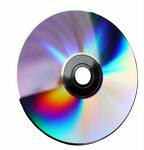

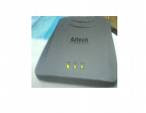
Ethernet Card:
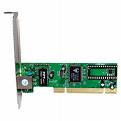
Keyboard:

Mouse:
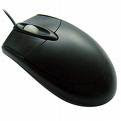
Floppy Drive:
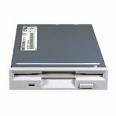
Posted by Nur Assikin bt. Jamaludin at 5:26 AM 0 comments

